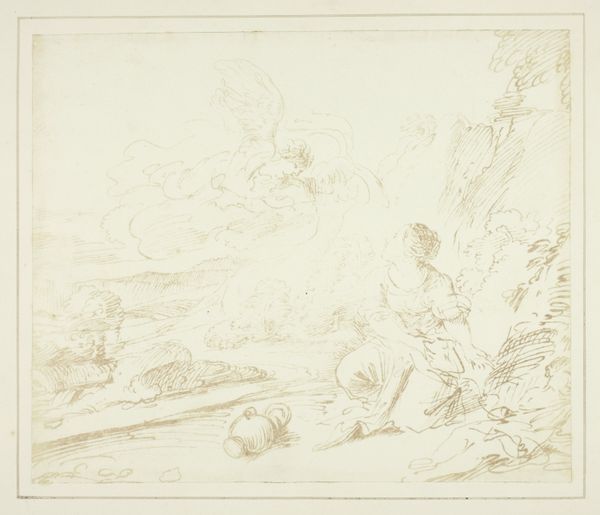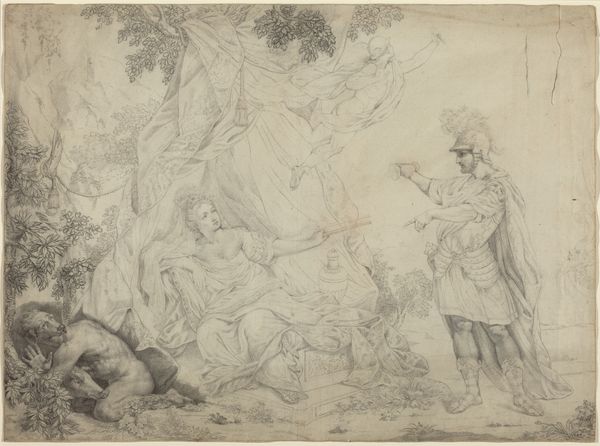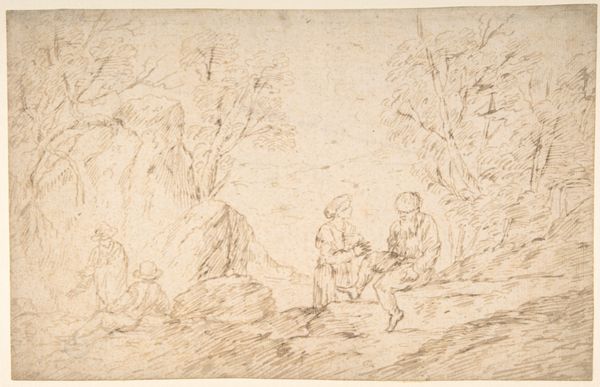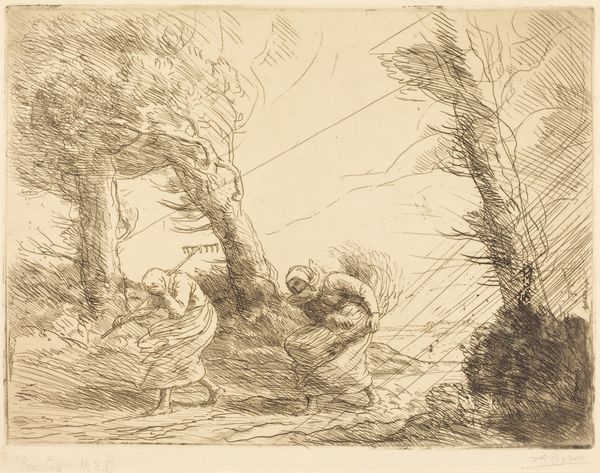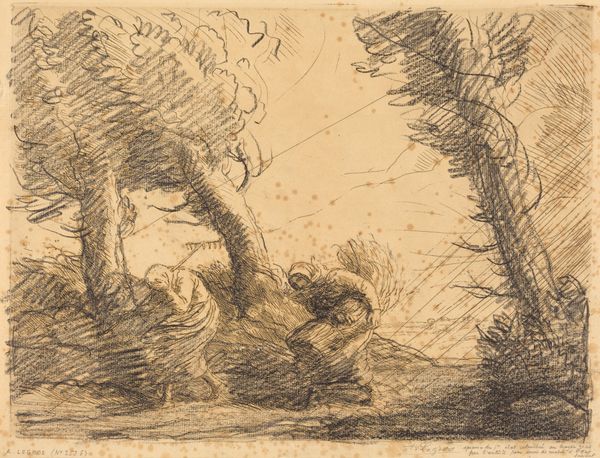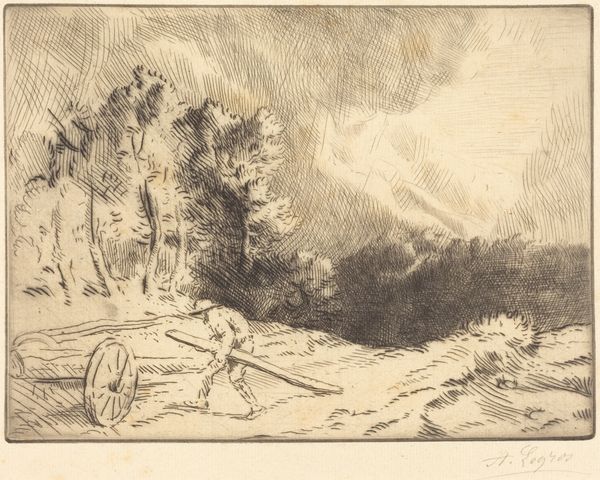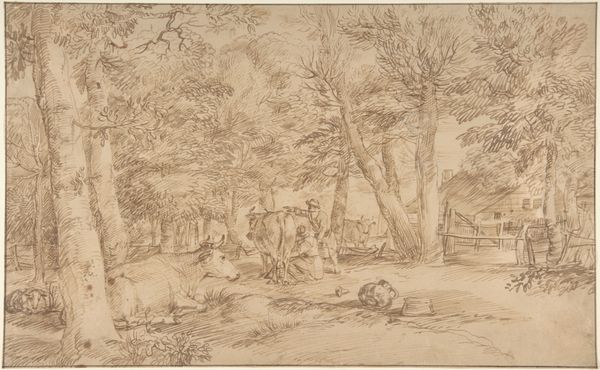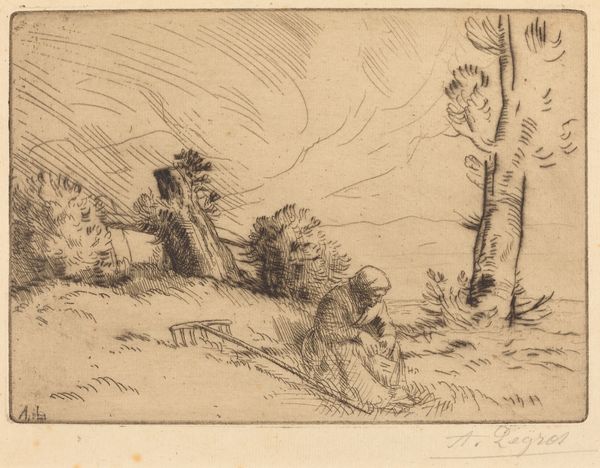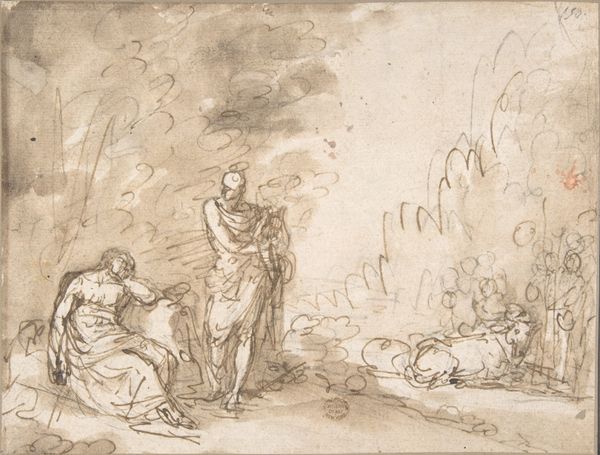
Jagdpartie, Jägerin und Jäger mit vier Hunden in einer Landschaft c. 1713 - 1714
0:00
0:00
drawing, red-chalk, etching, paper
#
drawing
#
red-chalk
#
etching
#
landscape
#
etching
#
figuration
#
paper
#
15_18th-century
#
genre-painting
#
history-painting
#
rococo
Copyright: Public Domain
Curator: Oh, there’s something so utterly enchanting about this drawing; it just sighs with pastoral charm, doesn’t it? It’s Jean-Antoine Watteau’s “Jagdpartie, Jägerin und Jäger mit vier Hunden in einer Landschaft,” created around 1713 or 1714. I’m just swept away! Editor: Immediately struck by the monochrome treatment, a kind of sienna wash. Is it just me, or does the overt romance of it all feel somehow artificial, like the Rococo equivalent of factory-farmed nostalgia? I can practically smell the paper itself; wonder where it was produced, who made it? Curator: Oh, you always bring it back down to earth! I see your point. It’s executed with such delicate, almost fleeting lines, isn't it? As if it’s all a daydream he’s sketched before it fades away. But consider the dogs straining on their leashes. They are practically bursting out of the scene with raw energy. Editor: Absolutely, and those leashes – such a clear expression of control and artifice, too, isn't it? We know red chalk and etching was Watteau’s favoured method and look how cleverly he employed red chalk for depth. It’s almost as though these materials determine the atmosphere – that soft focus isn't accidental at all! Curator: Exactly, the red chalk imbues such a warm feeling. What I particularly love, I confess, is the relaxed, posed stance of the woman. She isn't *really* hunting, is she? She’s more of an elegant emblem within the idealized landscape. There is a tension, maybe even humour in that artifice. Editor: It really highlights the shift toward art as commodity. These finely crafted tools – red chalk and paper, even the etchings reproduced from drawings were consumed avidly. And where did Watteau source his materials? This isn’t just idyllic; it’s embedded in early capitalist supply chains. Curator: Always, back to the material, but, in fairness, I follow you. And in the end this ‘idyll’ perhaps holds an unexpected strength, due to his sheer artistry! The confidence of his touch. Editor: Well, exactly! I feel that in engaging with the *making* of things – not just admiring – brings us closer to this artwork’s true meaning.
Comments
stadelmuseum about 2 years ago
⋮
This drawing is unusually large in scale. The artist probably executed it as a study for a larger composition. As no corre- sponding painting is known to us, it is difficult to tell whether the aim was a portrait of the huntress or a decorative composition, for example a sopraporta. Watteau applied the chalk rapidly and confidently, using simple means to reproduce the treetops just as skilfully as he did the clothing and the plants on the bank of the stream.
Join the conversation
Join millions of artists and users on Artera today and experience the ultimate creative platform.

